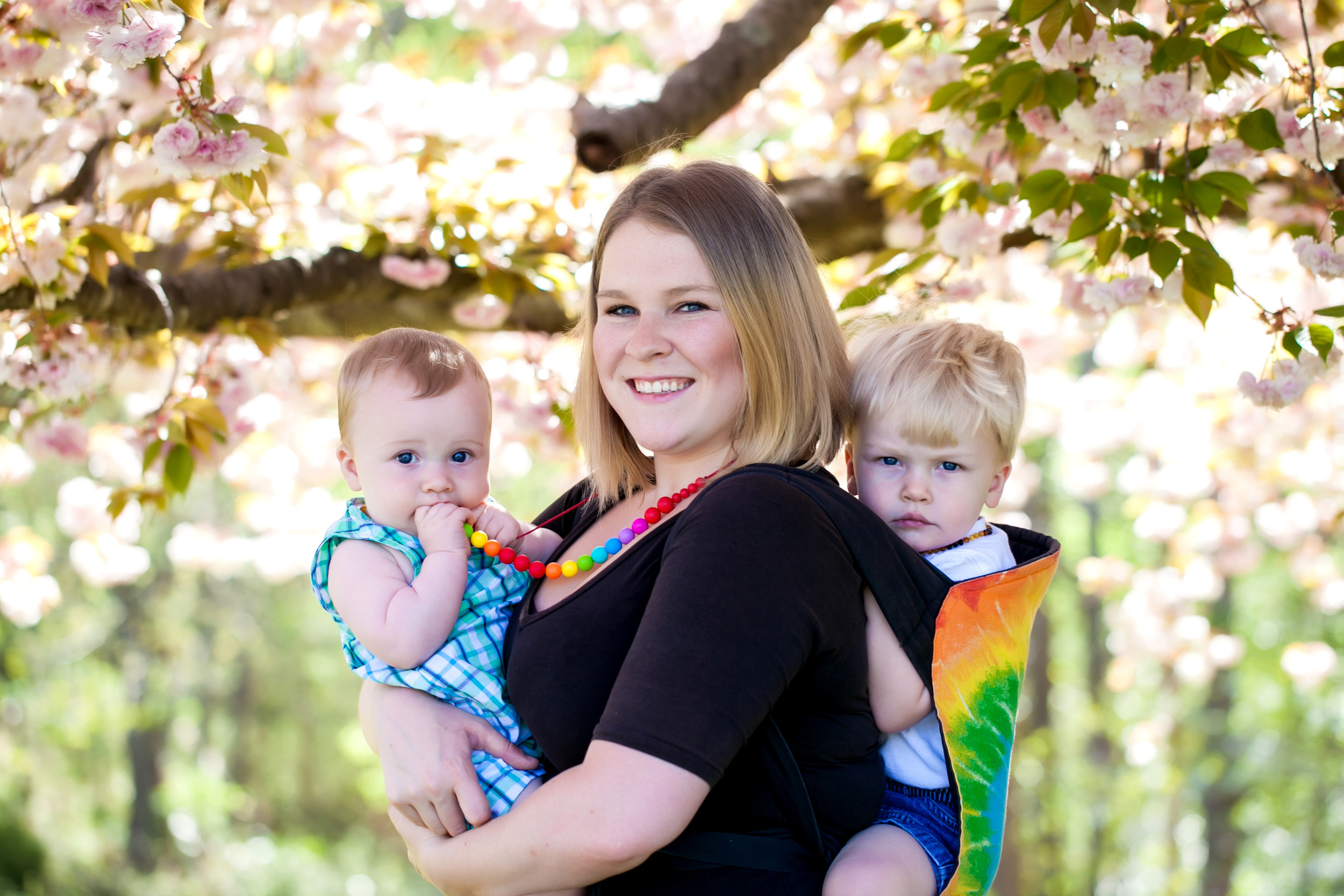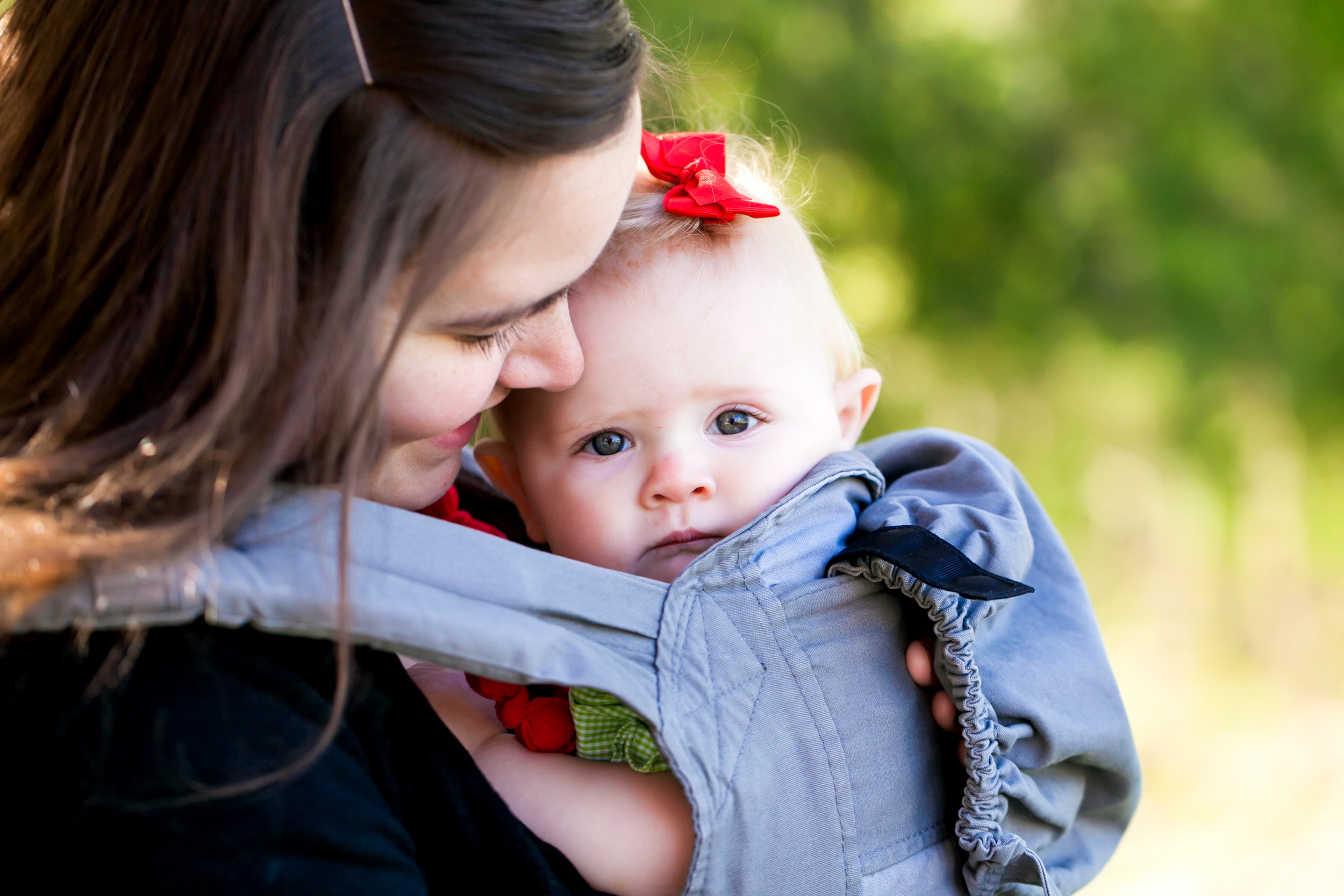The Motherhood Café Presents: Postpartum Body Image
Panelists:
Brandy Wilson, PT, DPT – doctor of physical therapy who has been practicing in the Lynchburg area for over 12 years, and focuses on pelvic health. Mom of 2, 9 and 6.
Trish McCoy Kessler, LPC – owner of Empower Counseling. Has been married for 10 years and has twin step daughters who are 17. Also a contractor with Prosperity Wellness, who treats eating disorders and body image issues in women and young girls. Loves working with women and empowering them to support each other in their journeys.
Erica: This is a sensitive topic that sneaks up on people and how emotional they can feel about these things. Our bodies go through a lot of changes during pregnancy and the postpartum period and so I just want you to feel comfortable with this discussion. At any point, we’d love you to chime in with your thoughts, experiences, or questions for our panelists. This morning is one that we’ve found in the past to be almost healing in its discussion. Sometimes we don’t realize the insecurities and feelings that we have where we are with our bodies and how we’re feeling as we transform from being a woman, to being a mother and a woman. Those changes are really difficult to talk about and to understand. This isn’t really a conversation that’s going to fix anything, but at the same time sometimes talking about it in a group and getting support and that you’re truly not alone in these feelings and people that you might look at and say, “she’s really got it together” to hear that we’re also got our baggage and insecurities and feelings about how we look, act, and feel about our bodies and our health in general. It’s helpful to know that we’re all struggling with things and hopefully that will make us that much more supportive of others to know everyone’s got their own stuff.
Erica: Health care disclaimer – local doctors and health care professionals are willing, advice is general . if you’re having a personal issue, please talk to your doctor and discuss your specific health care needs. Take anything you hear here with a grain of salt and discuss with your personal doctors.
Erica to Audience: We’re going to start with an audience participation questions: How would you describe your body before having children or pregnancy in one word?
Audience Answers: winter ready, strong, nice, energetic, curvaceous, mine, toned, prettier than I realized, curvy, cooperative.
Erica to panel: do you feel that our culture supports women’s body images in general? Do you feel like we have a good idea of what the body is really supposed to look like?
Trish: I don’t think so. I think our culture has high expectations of what we should look like. Social media and advertisements make a false representation of what we should look like as a woman at any age and I think that’s a lot of pressure and it’s very unfair. I don’t think there’s a healthy view out there.
Erica: What about postpartum? Do you think that we have a realistic expectation for how we’re supposed to be when we’re caring for small children?
Trish: No, I don’t think so either. I think there again on TV and social media it’s all about how quick did she get her body back. That’s just unrealistic expectations. I think that the women on TV all have personal chefs and personal trainers. I think that they create a false representation of what a postpartum woman should look like.
Brandy agrees.
Erica to Brandy: What do you think is the most surprising change that women have during postpartum?
Brandy: I think one of the things that I treat is the Diastasis issues – the abdominal don’t always go back to the way they were. Women will say that they have some ‘extra’ here or I tried a sit-up. One of the common exercises we’re taught is sit-ups and they can actually make Diastasis worse. We’ll try taping or show them manual exercises to strengthen the core. Folks come in to us having experienced when they sneeze or cough they leak or dribble some and they think ‘oh well I’ve had a baby, its normal’. Making sure everything’s working as well as it should.
Erica to Trish – What do you think some of the most common mental changes are after having a baby or pregnancy?
Trish: With the women I work with, they’re sometimes very anxious and depressed. They feel out of control. If it’s their first child, it’s the fear of the unknown, fear of body changes, and what to expect. We really work on some of these symptoms, loss of sleep and any distortions they have of what is realistic or what their bodies should be doing. I work with them to have a new normal of what it’s doing while they’re pregnant and after.
Erica: Why do you think that we’re so critical of our bodies? Why do we compare so much? Is it because of what we see all the time? Why do we have these expectations of how we’re supposed to look postpartum?
Trish: I think that the expectations and standards are just higher. I thought about my own mom – she’s not a size 2, but she’s the most beautiful woman I’ve ever seen. She always exemplifies self confidence and I never had this expectation, but as I got older and social media makes it harder than what it was years ago.
Erica: I sometimes am shocked at women’s experiences and what others have said to them postpartum. It hurts a little when your child says, “Oh, Mommy! You’re going to have another baby!” when you’re not. That’s a child and it’s innocent, but we’ve heard stories of amazingly insensitive things that have been said. It increases the feeling that you should hide yourself during that time.
Brandy: I myself have been struggling since my daughter. I’m a lot smaller now than I was a few months ago from exercising and being more cautious with food. You may have a long way to go, but it helps to remember where you’ve come from. Positive feedback from others is really helpful.
Erica asks the audience to share their experiences.
Audience: My husband reminded me that it took 9 months for my body to make these changes, so it’s not going to go back overnight.
Audience: I was shopping for a nursing bra at three stores and the clerks at two stores asked me when I was due. My son was right there with me and he’s 10 months old.
Erica to Audience: Have any of you ever felt “pressured” to get your body looking a certain way, either by your significant other or mother?
Audience: My sister kept asking me when I would be ready to go bridesmaid dress shopping. I said, “I’m ready now.”
Audience: I’ve had friends and family offer to buy me a gym membership to help me get my body back. I know they’re just trying to help but it was annoying.
Audience: I haven’t really had anyone say anything other than encouraging things to me, but I can relate to the social media aspect; especially with people trying to sell products. They show a picture of a women a week post partum and then again at 6 weeks postpartum and it’s a drastic difference. It puts those images in front of us and makes us think that’s what’s normal when it isn’t.
Erica: Images are really powerful. There is a sting that comes when someone is speaking to you directly, but the constant visual of what we’re supposed to look like is the thing that sticks with you. It’s difficult to adjust to your new body – it’s something that many women struggle with, no matter what their body looks like before or after.
There’s a really powerful blog post that’s circulating now that’s about being in the picture with your children. Twenty years from now when your children are looking back at pictures, they’re looking to see you. They want to see what we looked like when we were parenting them as a three-year-old. It’s something that we need to remember – our children love us and they’re going to want to see us again in the future, too.
Erica to Brandy – Can you talk a little more about the things women come to you for help with?
Brandy: Diastasis is where your abdominal muscles stretch during pregnancy and the lining separates. If you’re noticing a hernia in that area, we can do corrective exercises and get those muscles back together and strengthen your core.
Erica: Is that something you notice right away or can it be fixed years after pregnancy?
Brandy: It can be fixed right away. If you’re having issues or a lot of pain right after delivery or if it’s years later, it’s certainly worth coming in and getting back on track.
Erica: Let’s talk about the difference types of incontinence women deal with. I read an article on the history of Poise pads and it talked about how more women are using them in their thirties and forties.
Brandy: There are two types of incontinence: urinary and fecal. With urinary there’s stress incontinence – when you’re sneezing, or lifting. There’s urge incontinence when there’s a very strong urge. It can hit you and there’s no delaying it. It’s the process of standing up to go to the bathroom and everything empties. There’s also mixed incontinence, which is when you experience a mix of both. We look at see what’s your bladder doing with a log of what you’re drinking and how often you’re going, talking a little on the normal bladder – your normal bladder holds about 2 cups of urine and going is about 6-8 times throughout the day and night, and we should be able to sleep all night without it waking us up to empty. You should be going every 2-4 hours. If you notice with your bladder log that you’re going more than normal, those are things where your bladder isn’t working as it should. There’s also fecal incontinence – certainly with ladies who have had a 3rd or 4th degree tear with delivery. It can happen immediately or 10 to 15 years after. It’s a matter of seeing what your muscles are doing, doing behavioral modifications to get you back on track.
Audience question: Is the frequency of urination that you mentioned the same for during pregnancy? I find myself waking several times a night to empty my bladder.
Brandy: That’s what’s normal not during pregnancy. During pregnancy it might be a little more. The baby pushing on the bladder can increase the sense of urgency. We see ladies during pregnancy who have a lot of pressure - it’s utilizing the taping to give support and help them through their pregnancy.
Erica to Trish: Let’s talk about some of the things you see women coming in for. What are the things you suggest women do? What are some things that are helpful for women to do at home of they’re not ready for therapy?
Trish: Some of the things you can do at home are to realize what your trigger symptoms are, what’s causing your anxiety or depression. There are relaxation techniques that you can do. You can do deep breathing, yoga. If you’re ready or feel like you need to, I work with women with addressing anxiety and identifying depression. Managing coping skills and making sure their support system is in place.
Erica: You’ve mentioned you work with women are experiencing eating disorders. What happens when someone who is dealing with eating disorders gets pregnant and then deals with postpartum. How is it different?
Trish: I think it’s more extreme – you never really get past eating disorders. If you have an eating disorder prior to becoming pregnant, reach out to your physician to help. Nutrition is so important during pregnancy.
Erica on audience question: How can we accept that our breasts really change during pregnancy and nursing? Is there anything you can do besides plastic surgery?
Brandy – Muscle-wise, you can do more of your pec-major and -minor exercises to help posture and give you support and stabilization.
Erica: Do not discount the importance of proper garment fitting. Most women are not wearing the right size bra. If you’ve gone through pregnancy and postpartum and you’re wearing the same bra or if you’re been wearing the same bra for years, it’s probably time to invest. It can make an amazing difference.
Erica: What surprised you about your own feelings postpartum?
Brandy: Prior to my first child, I had my plan. I was going to nurse. I was going to take my lunch break to nurse. I tried and he wouldn’t latch. I went to the lactation consultants. I was in tears, my husband was in tears. I wasn’t worried about my body, but I thought it was going to be a smooth transition.
Erica: For the next part, we had one the moms here take some pictures of some of the other moms. These are some pictures of women here who were willing to be photographed in their postpartum bodies.
Audience Exercise: Make a list of 5 things you like and think are important about yourself. List 10 things that you value about people in your life that you’re closest to.
Erica: Mostly we just want you to look at those and see how many of them are about your physical appearance or are about other things. Whether it be their personality, or strength in character. Really look at what you value.
Trish: Erica, that’s one of the things when I work with women is to change their perceptions and identify all of the positive things. Sometimes we don’t take time for ourselves.
Erica: What do you think women should discuss more openly? How can we be more supportive?
Trish: Stop being so critical of ourselves and other women. Be a great role model for our children to help the next generation coming up to not be as critical.
Erica: Brandy, if women here are feeling like they want to get back in shape, to feel better about themselves. Where do they start?
Brandy: Start off with a walking program. Five minutes here and there add up and can make a difference.
Erica: At the beginning we talked about how we felt about our bodies before having children. Now, describe your body and yourself after you’ve had children. How would you describe yourself?
Audience: tired, phenomenal princesses of power, confident, proud, sensitive, beautiful, stronger.
Erica: To close, I would like each of you to take one last piece of paper and write a compliment to the woman on your right. It doesn’t need to be about her body; could be about her mothering, her smile, something you’ve noticed while we’ve sat here. Let’s not let a single woman sneak out of here unnoticed. You each are all beautiful.







 Our chefs: Melissa Kan, Kerissa Williams, and Laura Walker, and our moderator: Erica Wolfe.
Our chefs: Melissa Kan, Kerissa Williams, and Laura Walker, and our moderator: Erica Wolfe. Our panelists: Stephanie Fournier (PT, DPT, WCS, CLT-LANA), Jilayne Luckey (PPMD Support Group Leader), Debbie Perdew (DONA) and Lisa Wixted (LLL Leader and Yoga Instructor), and our moderator, Lauren Barnes.
Our panelists: Stephanie Fournier (PT, DPT, WCS, CLT-LANA), Jilayne Luckey (PPMD Support Group Leader), Debbie Perdew (DONA) and Lisa Wixted (LLL Leader and Yoga Instructor), and our moderator, Lauren Barnes.



 I had such a great time introducing babywearing basics at Café Express, and we got to try lots of different types of carriers!
I had such a great time introducing babywearing basics at Café Express, and we got to try lots of different types of carriers! Panelists: Maria Hayden and Jessica Reagan, and our moderator, Lauren Barnes.
Panelists: Maria Hayden and Jessica Reagan, and our moderator, Lauren Barnes. Our panelists: Kirstin Magnuson (Therapist and Mama) and Jill Stroud (Personal Trainer and Mama), and our moderator, Lauren Barnes.
Our panelists: Kirstin Magnuson (Therapist and Mama) and Jill Stroud (Personal Trainer and Mama), and our moderator, Lauren Barnes. Panelists: Josie Olson (Registered Play Therapist and Mama) and Madie Haskell (Early Childhood Education Professor, Mama and Grandma), and our moderator, Lauren Barnes.
Panelists: Josie Olson (Registered Play Therapist and Mama) and Madie Haskell (Early Childhood Education Professor, Mama and Grandma), and our moderator, Lauren Barnes.
 Panelists: Jackie Gordon (Adoptive Mama), Patricia Coleman (Adoptive Mama), Kirstin Magnuson (Licensed Therapist) and our moderator, Erica Wolfe.
Let's start with some stories about the adoption process. Jackie always wanted a large family, but did not know that adoption would be part of her story. After an injury during her second child's birth, she was no longer able to have biological children. This led she and her husband to the decision to adopt, specifically an international adoption from China. The process for their first adoption took about three years, plus another year of post-placement check-ups and paperwork. Their second adoption was through
Panelists: Jackie Gordon (Adoptive Mama), Patricia Coleman (Adoptive Mama), Kirstin Magnuson (Licensed Therapist) and our moderator, Erica Wolfe.
Let's start with some stories about the adoption process. Jackie always wanted a large family, but did not know that adoption would be part of her story. After an injury during her second child's birth, she was no longer able to have biological children. This led she and her husband to the decision to adopt, specifically an international adoption from China. The process for their first adoption took about three years, plus another year of post-placement check-ups and paperwork. Their second adoption was through 